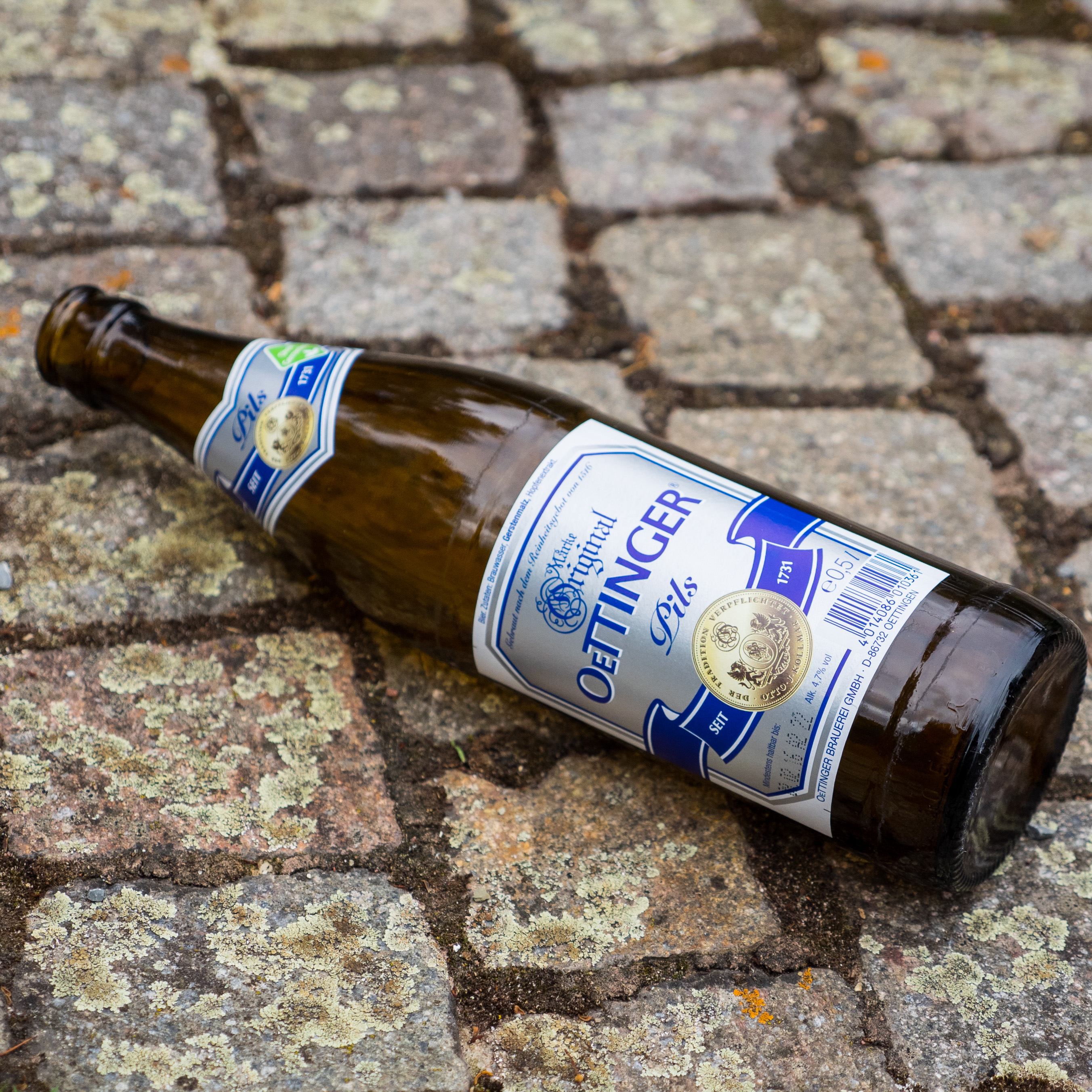In a small getränkemarkt, or beverage shop, on a side street in Munich, I peruse the selection. Front and center are crates of Augustiner, a celebrated local brewery offering a helles and slightly stronger Edelstoff. On a wall-mounted shelf, I spot Köstritzer, a beloved black lager from the northern state of Thuringia. Nearby are bottles of Schlenkerla Rauch, a smoked bier from the Franconian city of Bamberg, often called the “Beer Capital.”
In the corner, away from the favorites, rests another. A bier sporting a remarkably low price of €0.39 per half liter bottle. A bier that is simultaneously the most ridiculed and best-selling in all of Germany. A bier whose name phonetically resembles the sickly sounds of over-inebriated drinkers forcefully evacuating the contents of their stomachs: Uhhr-ting-err.
En route to visit a relocated college buddy, I’m unable to resist this purchase. At the counter, the proprietor gives me a quizzical look, like I’m trying to buy vegetables in a butcher shop. But before he can convince me to pick a “real” beer and pour this one into the street, I’m out the door and on my way.
In 1733, in the Swabian town of Oettingen, the Oettinger Brauerei was founded and subsequently introduced their Original Pils. Today, the brewery is Germany’s largest producer by volume, letting roughly 600 million liters flow forth each year.
In addition to their best-selling pilsner, they produce 10 soft drinks and 24 other beers and “beer-mix” drinks. Whatever you want—and perhaps some you don’t—chances are they have it. For those desiring an extra kick, there’s Oettinger Bier & Cola Mixed. Counting calories? Try the Oettinger Leicht or Leichte Weisse. For something fruity, choose from Weizen & Grapefruit, Weizen & Zitrone (lemon), or Weizen & Erdbeere (strawberry). Want a product name that’s just as hard to pronounce as the brewery? Then there’s Oettinger Urtyp. And for those drinkers who are children, or for those seeking what Oettinger describes as “food in a bottle,” or for those, like me, who don’t read the labels closely enough before purchasing, there’s 0.5% Oettinger Malz.
With the German drinking age at 16, Oettinger is the preferred brew of high school boys with empty pockets and places to be. These tipsy jungen can be found guzzling it by the crate-load while loitering outside of pricey Oktoberfest, while killing time at rural picnic tables, or while wandering streets outside clubs waiting for the girls to show up. German college kids can often be seen pushing shopping carts filled with Oettinger between supermärkte and their wohngemeinschaften, or communal apartments. Even the occasional thrifty adult can be caught downing an Oettinger in a city park, on a riverside bench, or outside a 500-year-old cathedral.
It’s not uncommon, come Sunday morning, to find the cobblestones of German altstädte, or old towns, to be layered with the glass fragments of shattered Oettinger bottles, like a prickly snow fell overnight.
Since the beginning, Oettinger Pils has been brewed in adherence to the Reinheitsgebot, which is one German purity law that everyone can support. Referring to ingredients, it allows only water, malted barley, hops, and yeast for making beer. Adopted in 1516, the original law did not include yeast. The microorganism, which consumes sugar and excretes alcohol, was not discovered until 1857 by Louis Pasteur. Prior to that time, according to brewing expert John J. Palmer, a common belief was that magical brewer’s sticks, which were passed down among families and resembled witches’ brooms, must be stirred into the wort to create beer. These sticks no doubt carried the yeast strains critical to fermentation.
Today, Oettinger Brauerei claims to keep prices low through a variety of cost-cutting strategies. They use state-of-the-art production machinery that is efficient and cost-effective. They own a fleet of delivery trucks, supplying directly to retailers. And they do not use expensive advertising. In fact, the photos splashed across their website could very well be left-overs from retailer Lands’ End with Oettinger bottles slipped in surreptitiously.
Despite their thrifty ways, Oettinger is fairly liberal when it comes to slogans, particularly those part of their “0%. 100%.” campaign. The entry page to their website offers the paradoxical choice: “0% TOO YOUNG. 100% OF AGE.” An Indiana Jones-style riddle allowing only German 16-year-olds to pass.
Navigating the website, the savvy consumer is inundated with further mind-bending statements. Some seem contradictory: “0% YESTERYEAR. 100% TRADITION.” Some suggest radioactivity: “0% RISK. 100% SAFE TO TRANSPORT.” And some are just plain weird: “0% BORING. 100% FOAM BEARD.”
At his flat, my friend opens the door with a welcoming smile, which becomes a bemused grin when he notices my proffered gift. Inside, he pours Oettinger into two tall-necked pilsner glasses. We say, “Prost,” and clink our glasses, making demonstrative eye contact to avoid, as the Germans warn, seven years of bad sex.
The first splash across the tongue is a bit metallic and slightly rough, like a better pilsner was dirtied during a dusty hike through the Bavarian countryside. The second sip is a bit bready and tastes of medium-quality barley. The hoppy bitterness offers a decent balance.
“It’s not bad,” says my friend. He takes his third sip.
“No, not bad.” I take my fourth. “Especially for the price.”
We nod simultaneously—a not-bad pils for a budget Bavarian. A beer that everyone can agree, as Oettinger claims, is literally “0% BALONEY. 100% BEER.”
